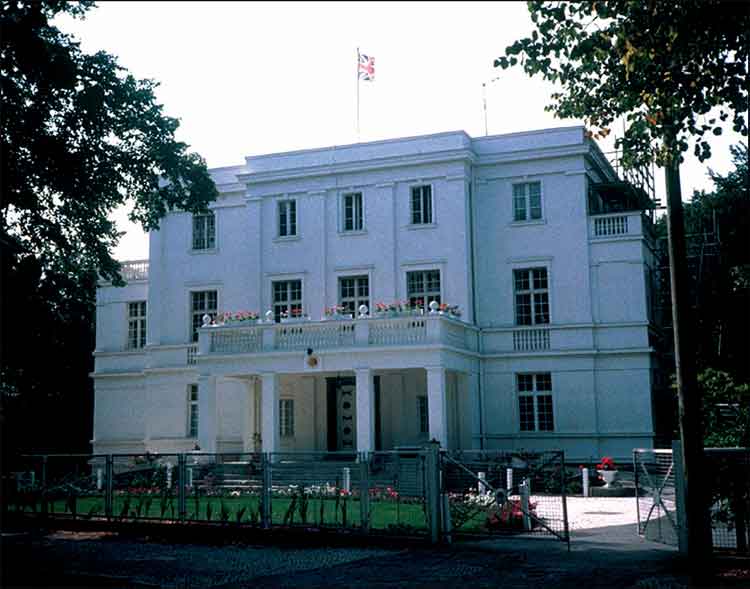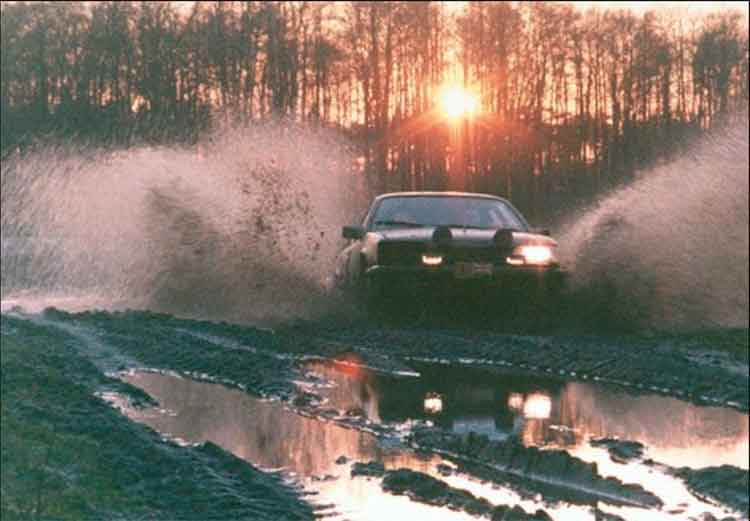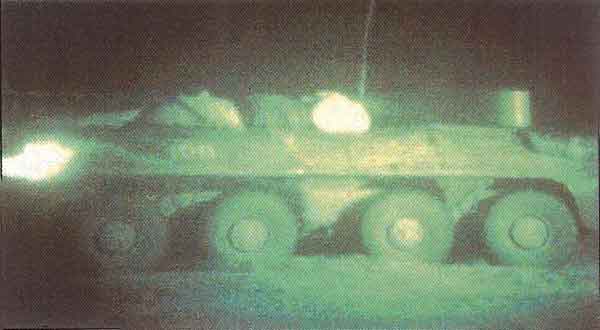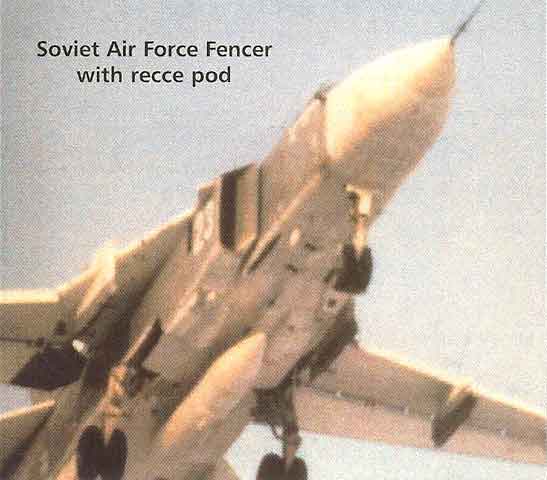
BRIXMIS Mission House (1958 - 1990) in Potsdam (Seestrasse).
Part - 1

Readers who served in Berlin will have been aware of BRIXMIS, a unit based both at the Olympic Stadium and in East Germany. Those who served only in West Germany (the Zone), will have been
aware of BRIXMIS's Soviet counterpart -
SOXMIS. This article aims to tell you what BRIXMIS did and
why, and also why anyone who served on it counted it as the most enjoyable posting of their military careers.

BRIXMIS was a bilateral military liaison mission born
out of the arrangements made by the Allied Powers to provide a government for post-war Germany after the
defeat of the Nazis. The title BRIXMIS was short for BRItish eXchange MISsion.

Following the Potsdam Conference the Allied Control
Commission Germany (
ACC(G)) began to govern their respective Zone of responsibility and in the old capital,
Berlin, within the 4 Allied Sectors. Negotiations began regarding the Military Missions on a bilateral basis
between the 3 Western Powers and the USSR. The first of these was concluded in the summer of 1946 between
the UK and the Soviets under the terms of the Robertson-Malinin Agreement. The Agreement allowed
for Missions of 31 personnel to be housed, fed, fuelled, guaranteed communications and diplomatic protection
of their premises and vehicles and freedom of movement within the Zone except in the case of notified
restricted areas. These personnel would be known as 'On Pass' and would be issued with Soviet/British ID
cards to allow them access and egress from the Zone concerned. Each Mission was commanded by a 'Chief'
and was accredited to the opposite Commander-in-Chief (
CinC).

The tasks of the Missions, at the time, were to assist
the Commanders of their respective Zones in the search for prisoners-of-war, repatriation of bodies, the hunt for
Nazi war criminals and witnesses, the monitoring of reparations' arrangements, and reporting on refugees,
the delivery of aid and other bilateral matters of interest.

The 3 Western Missions were given accommodation
in Potsdam (located near to the Rear HQ of the Group of Soviet Occupying Forces Germany (
GSOFG)) and the
Soviet Missions were located in Bad Salzuflen (subsequently Bunde) in the British Occupied Zone
(
BOZ), Frankfurt am Main (HQ US 12th Army Group) and Baden Baden in the French Zone. But the Allied Missions
were to have a major advantage through the proximity of West Berlin to Potsdam. Whereas
SOXMIS had to
provide all their support staff from within their established 'on pass' strengths the British, French and
Americans were able to establish HQs in West Berlin to provide operational and administrative support by
personnel who did not count on the pass allocation. In the case of BRIXMIS these additional personnel, by the
mid 1980s, numbered some 60+.

By the late 1940s the 'Allied' relationships of World
War II had deteriorated into the Cold War. Soviet domination of Eastern Europe came to a head with the
attempted blockade of West Berlin (1948/9). The Missions, however, continued their tasks and at no time
were they stopped from entering or exiting the Soviet Zone across the Glienicke Bridge in the south west
corner of West Berlin. The bridge would become famous over the years as a favoured site for spy exchanges. The
Missions' work continued, but it was now realised that they had an unparalleled and unique access to the
Soviet military. The Soviets, unlike the other 3 allies, had not disbanded or withdrawn their 1945 troop levels and
some 350,000 troops remained in an area smaller than England and Wales.

Until then BRIXMIS, although mainly military in its
personnel, had come under command of the Foreign Office, but in 1951 the Foreign Office agreed to the
Mission becoming primarily intelligence collectors and responsibility was passed to the War Office, with
command delegated to
CinC BAOR. In the same year, an
RAF
CinC for RAF Germany had been appointed alongside
CinC BAOR and the RAF now took a more formal role in the organisation and provided 40% of its personnel, including a Group Captain deputy to the
Brigadier Chief of Mission. The Mission was also renamed as the British Commanders'-in-Chief Mission to the Group of Soviet Forces Germany to reflect its dual responsibility to
CinC RAFG as well as
CinC BAOR and
the Soviet change of name.

BRIXMIS had been sending out Army, Navy and RAF
patrols, known as 'tours' since September 1946. Each comprised an officer,
SNCO and driver using vehicles
such as the Opel Kapitan and Opel Admiral and the crew included Russian/German linguists but, apart from
languages, all other training was learnt on the job. BRIXMIS employed personnel from all three services and
the civilian sector. From 1946-62 many of the junior ranks were conscripts.

In 1949 the Soviets allowed the establishment of
the
GDR although it would not be recognised by the UN or any governments, except communist ones,
until 1972. However the Missions would have to contend with East German police, the Stasi (Ministry
of State Security) as well as with the Soviet military authorities, KGB and GRU. After 1972 the political
problem of operating as a military unit in a country that was recognised as such by the British Government (to the extent of having a British
Embassy in East Berlin) but was, as far as the Robertson-Malinin Agreement was concerned, merely the
SOZ of Germany, caused many fevered
brows in Whitehall. The pragmatic decision was that the Robertson-Malinin Agreement was sacrosanct -
a view shared by the Soviets who ensured the East German authorities complied - and so BRIXMIS and
the US and French missions continued to ignore the existence of any
GDR official body. In practice, this
meant that, if detained by the East German police, BRIXMIS tours would refuse to acknowledge that they
had any status and demand to see a Soviet officer. This was no real change since
GDR security forces had begun
to harass the Allied Missions back in 1949, but it did lead to a much more aggressive attitude by the East Germans
towards the Missions. The creation of the
GDR had also
meant that, in addition to the large Soviet garrison, the Missions also had to undertake intelligence collection
against the ground, air and coastal naval forces of the National Volksarmee (
NVA). There were still
genuine liaison tasks to be performed such as wreath laying at concentration camps, arrangements for the Soviet May and October Day
Parades in West Berlin and receptions such as the Queen's Birthday Parade and courtesy visits to
GOSFG by senior British officers.

The real task - intelligence collection in the SOZ - a BRIXMIS Opel Senator on a Soviet tactical route. An example of this vehicle can be seen in the National Cold War Exhibition at the RAF Museum, Cosford.

BRIXMIS was also responsible for passing over
details of military trains and convoys travelling through the
SOZ from and to West Berlin. There
were also meetings where the 'displeasures' of each side were represented in the event of
incidents between tours and the local security forces. Lastly BRIXMIS provided the official Russian
interpreter to the British Governor of Spandau prison, located in the British Sector which, until his
death in 1987, would house Rudolph Hess.

Liaison was the official task of the Mission and it was
therefore important to keep this 'raison d'etre' alive and
well. BRIXMIS' intelligence activities were always underpinned by the
C-in-Cs' directive to do nothing which
would endanger the long-term existence of the Mission. However, it is also important to remember that
throughout the 44 years of BRIXMIS' existence there was never any real attempt by the Soviets to disband the
Missions, although it was a principal aim of the
GDR who saw the 'unregulated' presence of military spies as
totally unacceptable. One also has to accept that
SOXMIS in the
BOZ was also achieving positive results, although study of
SOXMIS's operations show they were
operating to a very different set of priorities and modus operandi.

BRIXMIS had clear directives not to engage in certain
activities such as running agents or sources, clearing dead letter boxes, assisting in the escape to the West of
any person nor to engage in acts of sabotage, violence or to carry arms.
SOXMIS was certainly running agents
and clearing dead letter boxes, and they had time to do this, as they did not have to collect the same level of
information on the order of battle as BRIXMIS did. BRIXMIS started from scratch having to identify every
unit in every barracks as little open source material existed.
SOXMIS had access to
BAOR newspapers,
BFBS, Soldier Magazine, RAF News as well as beautifully
painted signboards outside barracks giving details of the units therein. Books and magazines gave equipment
tables, photographs of aircraft and weapons and news of overseas exercises and operational tours to Ulster.

BRIXMIS and
SOXMIS were kept apart but there was some social contact between the two at functions organised by the Soviet External Relations Branch at HQ
GSOFG which was responsible for both organisations.
Part - 2
Touring in General and Ground Tours

Since BRIXMIS moved into Potsdam in September 1946 tours had been sent out into the Soviet Occupied Zone (
SOZ) to carry out monitoring and liaison duties. Often these tours met with little success and were detained since many Soviet officers and soldiers were totally unaware of the Robertson-Malinin agreement. Although the tours were liaison tasks, as explained in Part 1, intelligence collection did take place, although much was political and economic to meet Foreign Office requirements. Only towards the end of the 1940s, after the Berlin Blockade and the onset of the Cold War, did intelligence collection become more formalised and the primary task of tours on the ground. In 1949, with the Soviet establishment and recognition of the German Democratic Republic, the tasks expanded to include collection on the East German Armed Forces and paramilitary organisations.

The BRIXMIS establishment of 31 passholders allowed three significant advantages for tours. Firstly, the Mission could operate with a three man crew, giving greater flexibility and security. Secondly BRIXMIS could ensure that a minimum of two tours, and often three or four, were on the ground 365 days per annum; and lastly a full time Mission House Warrant Officer (MHWO or Manager), with his family, lived in the Potsdam House.

Touring techniques developed over time primarily through experience plus a number of traditions and eventually individual training prior to a person's posting to BRIXMIS. Experience was transferred to Standing Operating Procedures (
SOPs) and was enhanced through an individual's personal knowledge of the
SOZ plus an increasing array of equipment, basic and sophisticated, to support the tours, including the technical adaptation of the tour vehicles to meet changing operational requirements.

Tours normally entered and departed the
SOZ over the Glienicke Bridge in SW Berlin. Tours reported to the Soviet checkpoint on the bridge where passes and the vehicle number were recorded. The tours then proceeded to the Mission House, three to four minutes away, perhaps stopping for a cup of tea or to pass over messages/supplies. The procedure was reversed at lEe end of the tour on re-entering Berlin.

When the tour left the Mission House, noted by the East German policeman opposite the entrance, 'operations' started. Doors locked, cameras ready and the tour plan, developed over the past few days in West Berlin, began. Experience helped reduce conflicting targeting between the western Missions and avoided overkill on certain regions. The
SOZ was divided into four operational areas. The 'Local', an area of about 30km radius immediately around Berlin, was toured 24 hrs per day by each Mission on a rotational basis. The remainder was divided into Area A, north, and Areas B (south-west) and C (south-east) south of Berlin to the East German/Czech border. A, B and C were toured by the Ground tours of one Mission and the Air tours of another. Ground and air tours were responsible for different categories of target and these procedures reduced the chances of a mix-up. Rotation through these three Areas occurred about every three weeks. By the mid 1980s tours would deploy for between 24 hours and five days.

Night Photography of a Soviet BTR 70 Armoured Personnel Carrier

The tour comprised an officer, responsible for photography and navigation, a
SNCO/
WO, who recorded events and kit sightings with the use of a tape recorder, and the driver who was responsible for overall security. As
GSFG was a conscript army (two years' service) with 25% of its force rotating every six months the annual training programme was fairly predictable.

Ground tours were looking primarily for movement, either by rail, favoured by the Soviets, or road convoys. The tour aimed to collect vehicle registrations, or armoured vehicle side numbers, both by photography and written/voice notes. These numbers could then be translated into unit identifications and the strength and type of equipment units established. Running a convoy could be a dangerous activity, weaving between vehicles, recording numbers and then overtaking, often on narrow roads constantly looking for possible escape routes in case of an attempted detention.

The railway system was well mapped and preferred routes for new equipment coming in from the East, or movement between garrisons and training areas, were well known. 'Kit trains' were photographed and experience showed that the average time between trains was four hours. Tours having seen one train were expected to wait for the next... and the next...

Barracks were checked as well as emergency deployment areas (
EDAs) and training grounds. These would be mapped and 'scoured' for goodies. Training boards gave excellent technical details and operational procedures for equipment. Tours also visited bunkers to establish communication systems and layout details, as well as taking the opportunity to 'liberate' equipment, maps and papers for later exploitation. Exciting times followed if training was under way or bunkers occupied!

Eating, drinking and sleeping procedures were a tradition. Coffee breaks were run on the strict basis of first break, officer made the coffee/tea, second the
NCO and third the driver. Woe betide anyone caught trying to use cheap coffee granules (
NAAFI dust!) - the drivers' union ensured that their names would be named and shamed back at HQ. The main meal was in the evening and was a joint effort comprising the 'tour curry'. Some preferred really hot curries, 'wimps' the milder version. Breaks were almost always taken in an
OP position overlooking road or railway - time was rarely wasted. Mixed emotions would arise with a meal half cooked or a coffee break started when the BRIXMIS battle cry of "Kit!" meant a rapid pack up and the start of the chase.

Ground tours slept in locations known as `Z-platz' named after the sound of gentle sleeping, usually well away from any other activity. The driver always slept in the vehicle but the officer and tour
NCO were in one man bivouacs close to the tour vehicle. In winter the tour might sleep in a barn but took care to leave early in order not to get the farmer into trouble with the authorities.
BRIXMIS Air Tours

Despite the title, BRIXMIS air tours were carried out on the ground in East Germany. The name merely indicated that primary targets for intelligence collection were air-orientated: aircraft, helicopters, surface-to-air missiles, air-to-ground weapons and radar/electronic systems. The majority of air tours were carried out by RAF personnel, who comprised about 30% of the BRIXMIS strength, but frequently RAF personnel undertook ground tours or army pass-holders came on air tours. The usual crew for air tours comprised an RAF Tour Officer and Tour
SNCO/
WO, but the drivers were drawn from a joint army/RAF team, so many army drivers were privileged to tour in the more relaxed RAF style. All tourers were trained to recognise both ground and air equipment and to photograph it, although, inevitably, regular exposure to either regime ensured greater knowledge of the details.

Air tourers had a significant disadvantage compared with ground tours in that the requirements for photographing aircraft and their weapons, the prime task, dictated that the best observation point (
OP) was where the aircraft was flying low (and preferably slow) and with the sun behind the camera. Almost by definition, this called for
OPs on the south side of airfield approach paths or as near as possible to the firing point for aircraft at air-to-ground ranges. Sadly, with three western Missions covering the same ranges and airfields, although on a coordinated plan, the best
OPs almost had groove marks from the tyres of Mission vehicles over a 44 year period. This predictability gave Soviet and East German commanders, and the agents of the STASI (the East German State Security organization, commonly called 'narks'), the opportunity to 'stake-out' known
OPs w The system was also tilted in favour of the Soviets and East Germans by the practice of flying from individual bases on alternate days. Hence, if an air tour was spotted heading in the general direction of a group of airfields, the STASI (the particular bete noire of air tours) could cut the odds as to which airfields might be worth staking out.

To counter this, air tours tended to leave West Berlin in the late evening, thus allowing more time to 'de-nark' en route in the dark. This could involve setting off in the wrong direction and then leaving the roads to travel cross-country on night-vision goggles - something most of the narks could not emulate with their normal vehicles - Lada saloons. However, there were areas where the narks were known to use the off-road Lada Niva, and here much more care had to be taken to be sure that tours were unaccompanied as they approached the target area. On arrival in the area of the
OP, normally in the small hours, a Z-Platz near enough to the airfield that tours would be woken by early take-offs was selected, close enough to the
OP that movement in the tour vehicle was minimised. Until the mid-1980s, the Soviet Air Force flew from 0500 hrs or thereabouts in the summer, but, to the joy of air tourers, the pattern reverted to a more agreeable first take-off at around 0800. On moving into the
OP, the tour swept the area to detect any narks already in situ, and, if found, to roundly abuse them, suggesting that they might be more appreciated elsewhere. Although favoured
Ops were generally in tree-lines, there were many sites where it was much more advantageous to stop in the middle of a field, having checked the availability of multiple exits if pursued. This generally meant that the narks had to observe and photograph tours from further away. Air tours were obliged to live with fairly constant narking and to learn to operate despite it. It was a different matter when the local base commander despatched lorry loads of troops to try to detain tours, and many enjoyable fast pursuits through field and forest ensued. This was when the skilled drivers showed their prowess.


The art of taking a flying programme was driven by experience. The driver stayed in the vehicle (Range Rover or, latterly, the Mercedes G-Wagen) as security and lookout. The officer and
SNCO stood outside - OK in the summer but less popular in a foot of snow - and, at the first sighting of an aircraft, the
SNCO used binoculars to identify the type of aircraft and the weapons carried. The officer then exposed between six and 36 frames of film using a motor-driven Nikon F3 with 1,000mm lens, adjusting the shutter speed of the camera as he did so to increase exposure for new or unusual weapons and pods. Before the next aircraft appeared, the flying log was completed, a new film loaded and the whole crew scanned the surroundings for danger. At air to ground ranges, video cameras were used to record delivery profiles with an overlaid commentary. Helicopters could be very exciting, with the pilots occasionally flying aggressively at the tour vehicle (particularly useful if the tour wanted close-ups of sensors and weapons), or even chasing vehicles and directing troops in ambushes.

A different technique was required at missile or radar sites, particularly where the weapons or equipment were new. The tour got as close as possible to the fence or wall and then photographed in as much detail as possible, including taking risks such as backing the vehicle up to the wall and then climbing on top to photograph over the top, hoping that there wasn't a sentry immediately the other side!

At the end of a hard day's air touring, air tours downgraded to ground touring, taking on rail and road watches throughout the evening - and the night if necessary - before resuming the more gentlemanly practices of regular air touring the next day.

[Note from Web Master: I can strongly recommend buying a subscription to the Pennant which is the 6-monthly Journal of the Forces Pension Society.
The Aims of the Forces Pension Society
The aims of the Society are to secure equitable and justified conditions in the Armed Forces Pension Scheme for all ranks of all three services, both serving and retired, and for their widows, widowers and dependants, that recognise the unique commitment they make and have made to their Country and which are in line with modern good practice; and to advise and assist members of the Society on pension problems and related issues.

The Society promotes these aims, in co-operation with other Service and civilian organisations, and lobbies Government, Parliament, the MoD and the Armed Forces leadership responsibly and by all reasonable means to secure improvements. Members are kept informed of the Society's activities through its journal
Pennant, the
AGM and area meetings.

The Society is funded by it members and is wholly independent. It is not a charity, but it is a not-for-profit company. It has a small charitable arm in its Widows' Fund from which agreed activities, such as fighting widows' cases can be funded.
To Join call: Membership Secretary: Wing Commander A M O Scott RAF (Andrew) on 020-7820-9988 or
E-mail: memsec@forpen.co.uk




